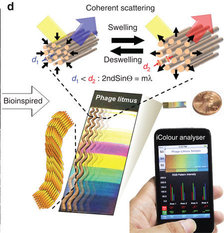In view of the growing resistance against antibiotics, it is vitally important that we try to find ways to counteract this development. … Farsighted clinicians warned us as long as 10 years ago, when we were still students, that we should not hastily treat any little infection with penicillin.
If we should discover any-new possibilities for treating infections, then we should look at these possibilities only from the angle that such a therapy would have to preclude the formation of resistance as much as possible, therapy with bacteriophages fills the requirement. The fact that this therapy has so far met with skepticism is due to the results which, until a few years ago, did not ome up to expectations
[Schaefer, W., “Contribution on Epidemic Control” Vol. 3, Hippocrates, Stuttgart, 1948]. If we try to track down the reason for the failure of the earlier bacteriophage therapy, we will find that this was mostly due to the biological properties of the phages.
Now it is important to know that the bacteriophage has high specificity. Therefore, therapy can be effective
only If the administered phage encounters its homologous bacterium.
The disadvantage of our earlier phage preparations was to be found not only in the inadequate breeding methods but above all in the fact that only about 1-2 phage strains were available. If we consider the large number of pathogenic bacteria strains, which play a role even in a very simple infection or which at least at times might play a role, then we would have to set up two requirements. First of all, in order to have a wide range of effectiveness, such a therapeutic substance would have to contain a large number of various phage strains. Second, it is necessary that phages which would come into consideration for therapy should have sufficient virulence with regard to pathogenic viruses.
We used the preparation (Diriphagen ® Dr. Heinz Haury Chemical Plant, Munich) because we believed that this preparation met the requirements we just set up. According to Information received, this reparation contains 180-200 different phage strains and thus has a broad spectrum of effectiveness. In addition, it also contains so-called aimed antimicrobics which act against those bacteria that reveal primary phage resistance. We might note here that both the phage components and the added microbics in every ampule are standardized and meet the requirements for biological standardisation as regards phage effect [Penso, G., and Ortali, V., Arch. belges Med. Soc., 1, 1959]. If we mention the two therapeutic components, that is the bacteriphages and aimed (directed) antimicrobics, we are really not fully describing the effects mechanism as such. We have a third factor here. What we are dealing with here is the stimulation of the inherent defenses of the body which are bound to be aroused and which are based on the following: In breeding phages and antimicrobics, the pathogenic microbes used for this purpose give rise to lysates. But these lysates are not eliminated; instead they are also fed into the body. They act like antigens and lead to the formation of antibodies which in turn are specifically directed against the bacteria to which lyntes were added [Glauser, H. A., Med. achr., 13, 420, 1959.]. This reaction requires a latency period of about 8-10 days. The value of this antibody formation is hard to estimate in the individual case. We can get some specific figures on this only if we determine the phagocytosis capability; but this must be done in the clinic. Any new therapy is very often impaired by the fact that we do not employ it until other, more familiar measures have failed. We must admlt that we did not use Deriphagen until we had some patients in whom other preparations had not produced success. This is further by reports from other authors who achieved surprisingly good results with this preparation [Cevey, M., Schweiz. Z. Tuberk. (Swiss Tuberculosis Joural),
15, 34, 1958; Corbelli, G., Bologna Med., 6, 57, 1959; Delacoste, P., Rev. suisse Med., August 1959; Schaefer, W., “Contribution on Epidemic Control” Vol. 3, Hippoprates, Stuttgart, 1948].
Figure 1 shows the result of our treatment. The first column shows the total number of all patients treated; then we have the number of patients cured which abounted to 55.1%; then we cow to those who showed substantial improvement and on the right we have those patients who did not improve as a result of therapy [34.8%].
The author notes, however, that there is a discrepancy between microbiological and clinical results. That is, patients apparently reported a return to healthfulness but this did not coincide with elimination of pathogen, which the author seems to suggest is a consequence of phage- resistant forms not being pathogenic.
The text in the PDF then essentially fades away, though the main text of the paper continues on for two more pages!
Further reading:
Hoeflmayr, J. (1962). Inhalationstherapie mit Bakteriophagen bei therapieresistenten Infektionen [Inhalation Therapy with Bacteriophages for Treatment-Resistant Infections]. Fortschritte der biologischen Aerosol-Forschung in den Jahren 1957–1961 [Advances in Biological Aerosols Research in the Years 1957–1961]. 403-409. 1962. (I believe this is the original reference)
Abedon, S. T., Kuhl, S., Blasdel, R., Kutter, E. M. (2011). Phage Treatment of Human Infections. Bacteriophage 1(2): 66-85. [PubMed link] (this article provides further historical context on European use of phage therapy, though note that description of a German tradition in that article is completely lacking and so far as I am aware was unknown to the authors at the time of its writing)


